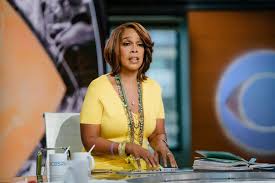For more than four decades, LL Cool J has remained one of hip-hop’s most recognizable figures, not only because of his groundbreaking music but also because of his ability to evolve while never losing the swagger that made him a household name in the first place. As one of the original architects of rap stardom, his impact can be measured not just in record sales, awards, or accolades, but in the way he continues to captivate audiences across generations. The rapper, actor, entrepreneur, and host has become a cultural mainstay, embodying both the spirit of hip-hop’s early days and the innovation that keeps the genre moving forward. And once again, he’s preparing to remind fans why he still matters at the 2024 MTV Video Music Awards, where he’ll serve as emcee for the night.
The VMAs have long been a place where music and spectacle collide, and LL Cool J’s history with the awards show is practically legendary. His relationship with the stage stretches back decades, and it’s not just about nostalgia—it’s about showing that his brand of performance and charisma still translates in an era where music is often consumed in 15-second bursts. Following his six-minute medley at the 2024 ceremony, where he lit up the stage with classics like “Going Back to Cali” and “Headsprung,” LL is taking on the responsibility of keeping the energy high as the host. For him, the job isn’t just about delivering punch lines or introducing artists—it’s about bridging the gap between the fans who grew up watching him dominate hip-hop in the late ’80s and early ’90s and the new generation of music lovers who may know him as an actor on NCIS: Los Angeles or even as a stylish presence on social media.
In conversation with USA TODAY ahead of the show, LL Cool J explained why hosting the VMAs appeals to him so much. “I enjoy hosting because it’s a chance to get close to new fans and a chance to see fans that have been along for the journey,” he said. That idea of the “journey” is something that defines LL’s career, a story that stretches from his early days as a teenager making noise in Queens to becoming one of the first rappers to successfully cross into mainstream superstardom. Hosting the VMAs, in many ways, is an extension of that journey—an opportunity to showcase how he can still command a crowd while celebrating the genre and culture that shaped him.
This year’s VMAs are packed with star power, with performances lined up from Busta Rhymes, Sabrina Carpenter, Ricky Martin, and Post Malone, among others. For LL, the beauty of the show is its diversity. He calls it “the ultimate playlist,” a melting pot of different genres and personalities that reflects where music stands today. It’s also a reminder of the VMAs’ unique role in shaping the culture. Unlike other award shows that lean heavily into tradition and formality, the VMAs have always thrived on chaos, shock value, and moments that linger long after the show ends. LL Cool J knows this better than most—some of his career-defining highlights are tied to that stage.
Take 1991, for example, when he strutted out in a leather hat and sleeveless vest to perform “Mama Said Knock You Out.” The anthem had already established itself as one of the most important hip-hop tracks of its era, but watching him roar through the performance with the crowd’s hands raised solidified it as an iconic moment. That same night, he walked away with the award for Best Rap Video, further cementing his place in the genre’s upper echelon. A few years later, in 1996, he delivered another unforgettable VMAs performance, riding in on a motorcycle before launching into his risqué hit “Doin’ It.” These weren’t just performances—they were statements of dominance and showmanship, evidence that LL understood the theatrical power of hip-hop at a time when the world was still adjusting to rap’s presence in the mainstream.

Yet even with those memories, one moment from the VMAs stands taller than the rest for him: receiving the Video Vanguard Award in 1997. Being honored with the award placed him in rarefied company, alongside names like Madonna, Janet Jackson, and Guns N’ Roses. But what made it even more significant was the fact that he was the first rapper ever to receive the honor. That milestone not only validated his own career but also signaled a shift in how hip-hop was being perceived by the industry. Presented by Mariah Carey, who herself will receive the same award this year, the moment was one of those full-circle instances that underline just how far both he and the culture have come. “Mariah Carey gave it to me back then, you know what I’m saying? And now come full circle, she’s getting one,” LL reflected with pride.
That ability to connect the dots between past and present has been key to LL Cool J’s longevity. This year, he’s even up for another moon person statue for Best Hip-Hop, thanks to “Murdergram Deux,” his collaboration with Eminem. It’s almost surreal to think about: decades after his debut, he’s still creating work strong enough to compete on a stage filled with artists half his age. For LL, the secret to this staying power comes down to inspiration and attention. He’s never been content to rest on his legacy, instead keeping a close eye on the evolution of the genre while maintaining the authenticity that made him a pioneer in the first place.
The VMAs themselves have also evolved over the years, and LL is quick to point out why the show remains so relevant. “It’s about your art impacting the world visually,” he explained, highlighting the way music videos remain an essential tool for connecting with audiences. In a time when people “listen with their eyes,” as he puts it, the visual component of music has arguably never been more important. From TikTok dances to YouTube premieres, artists today live in a landscape where imagery can make or break a hit, and the VMAs continue to celebrate that dimension of artistry. For hip-hop especially, the visual language has always been central—whether it’s the fashion, the jewelry, or the sheer attitude, rap has thrived on projecting an image that resonates as strongly as the music itself.
LL Cool J understands this dynamic better than most because he lived it. In the 1980s, when hip-hop was dismissed by many as a fad, his music videos helped introduce rap to households that might not have otherwise encountered it. By the 1990s, artists like LL, Busta Rhymes, and others were using the medium to push boundaries, creating visuals that were as influential as the songs themselves. This year, Busta Rhymes will be recognized for his own contributions with the first-ever MTV VMA Rock The Bells Visionary Award, a nod not only to his creative impact but also to the broader influence of hip-hop visuals on global culture. “The whole world is kind of dancing to the beat of this hip-hop drum,” LL observed, noting how the culture’s style—from clothing to jewelry to attitude—has shaped fashion and entertainment worldwide. And he’s right: hip-hop has become the cultural default, and MTV helped provide the stage that propelled it there.
As he gears up to host this year’s ceremony, LL Cool J is focused on one thing: making sure the audience has fun. Hosting, for him, isn’t about dominating the spotlight but about setting the tone for the night, keeping the energy flowing, and ensuring that viewers at home and fans in the arena feel like they’re part of something special. “The goal is to just make it fun for everybody that’s watching the show and make sure they have a good time,” he said. It’s a deceptively simple mission, but it speaks to the core of who LL is—a performer who thrives on connection, whether he’s rapping in an arena, acting on television, or standing at the VMAs podium.
His return to the VMAs stage in this capacity is also a reminder of just how much the show and hip-hop have grown together. What started as a fringe genre that had to fight for space is now the dominant cultural force, with artists from every corner of the globe borrowing from its rhythms, styles, and aesthetics. LL Cool J was there at the beginning, helping to shape that narrative, and now he’s still here, ensuring the next generation understands both the history and the possibilities that lie ahead. In many ways, his presence as host embodies the entire spirit of the VMAs—rooted in tradition but always pushing forward, honoring the past while embracing what’s next.

At 56, LL Cool J shows no signs of slowing down. His career has taken him from the streets of Queens to Hollywood sets, from platinum records to award stages, from groundbreaking rapper to respected elder statesman of the culture. Through it all, he’s maintained the confidence, charisma, and cool that first earned him his name. And as he steps into the spotlight once more at the VMAs, both as host and as nominee, he carries with him not just his own legacy but the legacy of hip-hop itself—a genre that has proven, time and again, that it’s here to stay.



